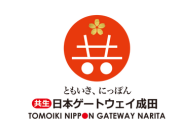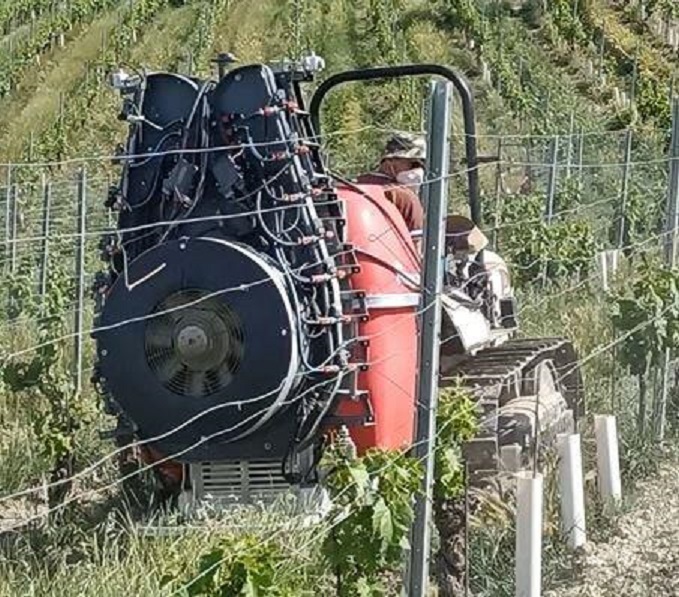
A prototype sprayer passes through a vineyard at the G Penna State Higher Education Institute in Asti, Italy. It’s part of a field trial in association with the Consorzio Barbera d’Asti e Vini del Monferrato. The consorzio says the results are “promising”.
A “cheap and common” airblast tower sprayer has been retrofitted with a “smart sprayer”.
By increasing the efficiency of the sprayer through the use of new technologies and artificial intelligence, vineyards can reduce present application losses by more than 50% – and easily reach the EU Farm2Fork requirements for pesticide reduction.
The project – called NoviAgri (New Application of Vegetation Indexes In Agriculture) – has created a mobile application and a Decision Support System (DSS) for the sprayer.
It is hoped the system (below) will help to reduce vineyard management costs and the environmental impact of phytosanitary treatments.
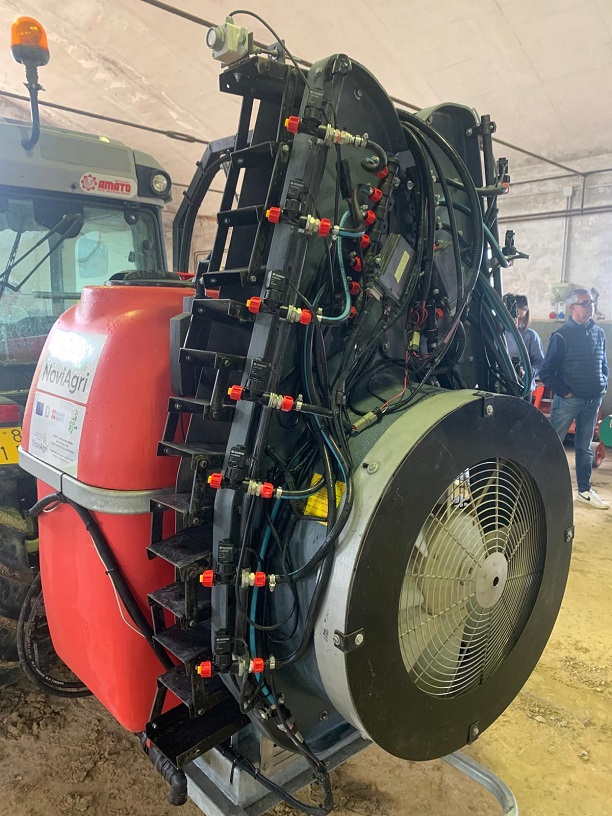
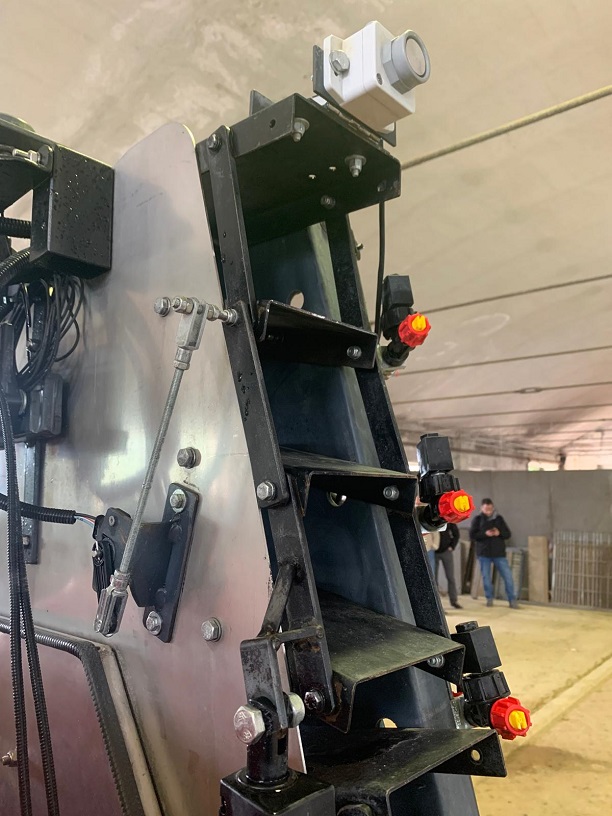
The field trial shows the prototype ‘smart sprayer’ was able to increase the spray application efficiency by adapting the spray application rate to the canopy density.
- Airborne losses – spraying into the air above the canopy – were reduced by 50% by automatically adjusting the sprayer based on DSS information and automatic airflow orientation in the ‘smart setting’.
- There was also a small reduction of airborne losses when there was a gap in the row of vines.
- In the ‘full-smart setting’ – with sprayer adjustment + real-time VRA systems – there was an even more dramatic reduction in both the airborne losses and within gaps as well as less spray on the ground. With this system the pesticide consumption reduction was 73% while still guaranteeing biological efficacy.
How it works
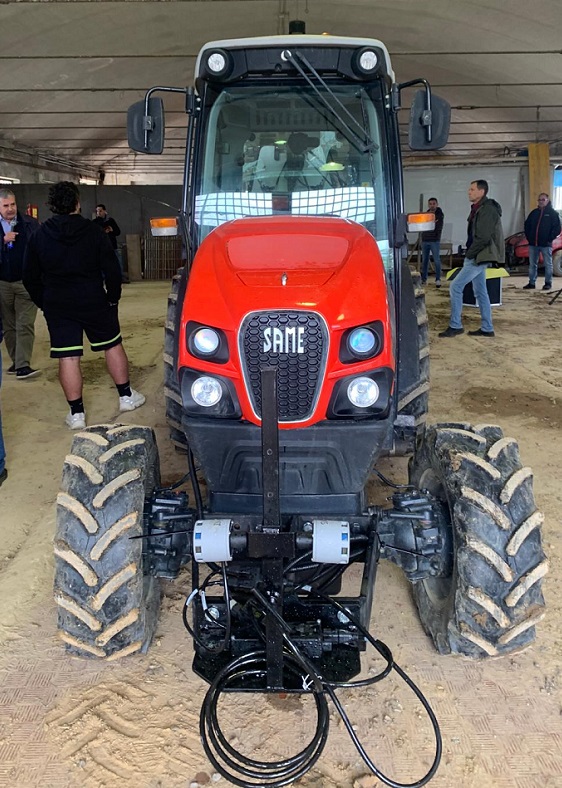
The information comes from sensors placed in front of the tractor. The data is processed using an algorithm developed by DISAFA that considers the canopy dimension and depth in order to apply the amount of pesticide needed for pest control.
The system closes the nozzles in the absence of vegetation.
The fan airflow, airflow direction and airflow rate are all adjusted in real time to match the canopy thanks to proximity sensors, automatically orientable deflectors, fixed deflectors, an electric actuator, ultrasonic sensors, and GPS antenna.
Judging by the trial results, the system will reduce vineyard management costs while increasing the efficiency of phytosanitary treatments.
“We are extremely proud of the progress made with the NoviAgri project,” stated Vitaliano Maccario, president of the Consorzio Barbera d’Asti e Vini del Monferrato. “The integration of artificial intelligence in viticulture is not just the future, but it is already a reality in our region, demonstrating that technological innovation can go hand in hand with the tradition and manual skills of our winemakers.”
The field trial was the final step of the long research project and the system will now proceed to industrialisation. According to the consortium, several agricultural machinery manufacturers have already shown an interest in producing the sprayer from scratch or a kit to install on sprayers already in use.
The project, a collaboration between the University of Turin, Tecnovict-Spezia Srl, CSP Innovation in ICT, and the consortium, was recognised earlier this year by the OIV, which described it as an important improvement and innovation for the protection of the environment and consumer health.

 English
English French
French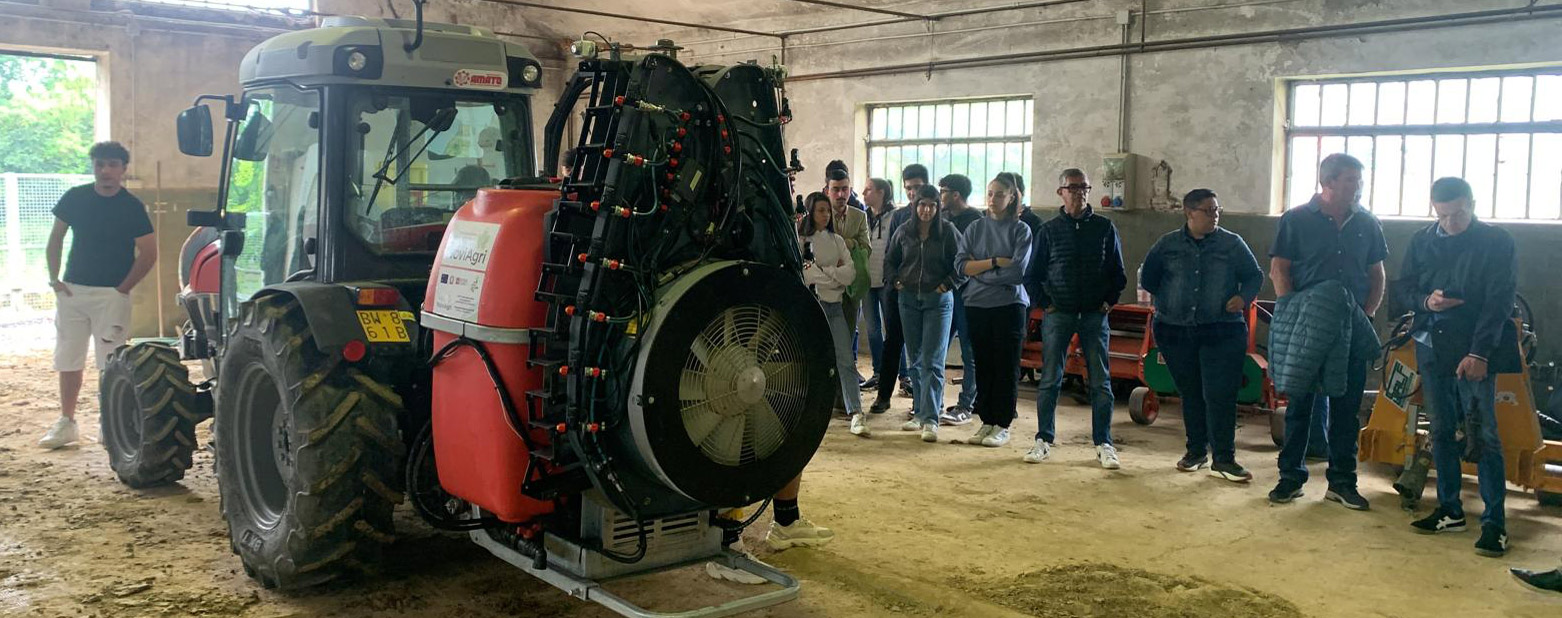







.png)
